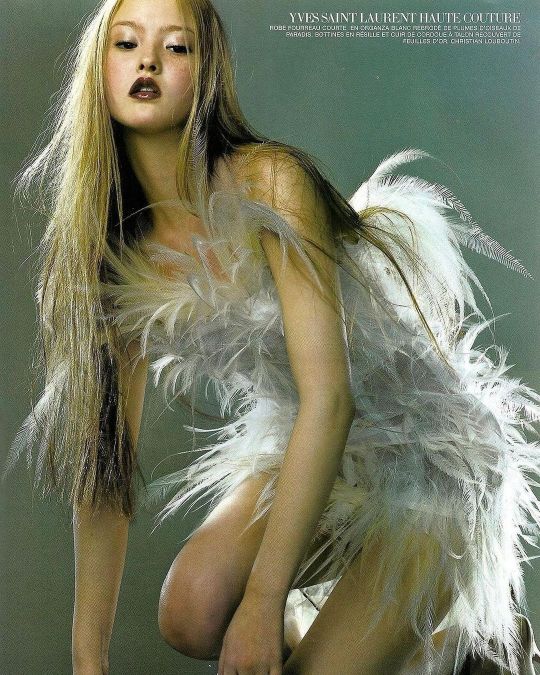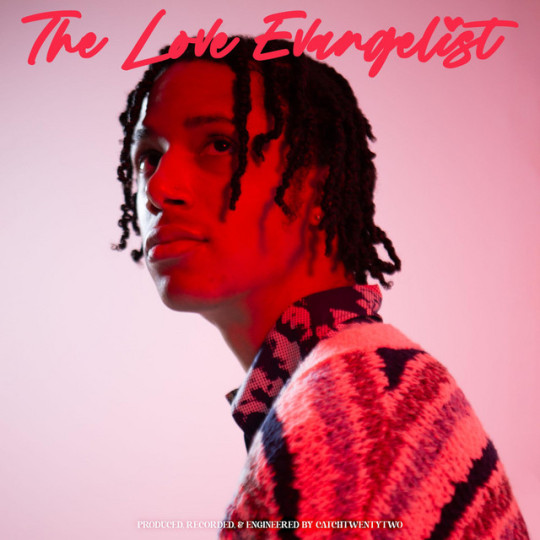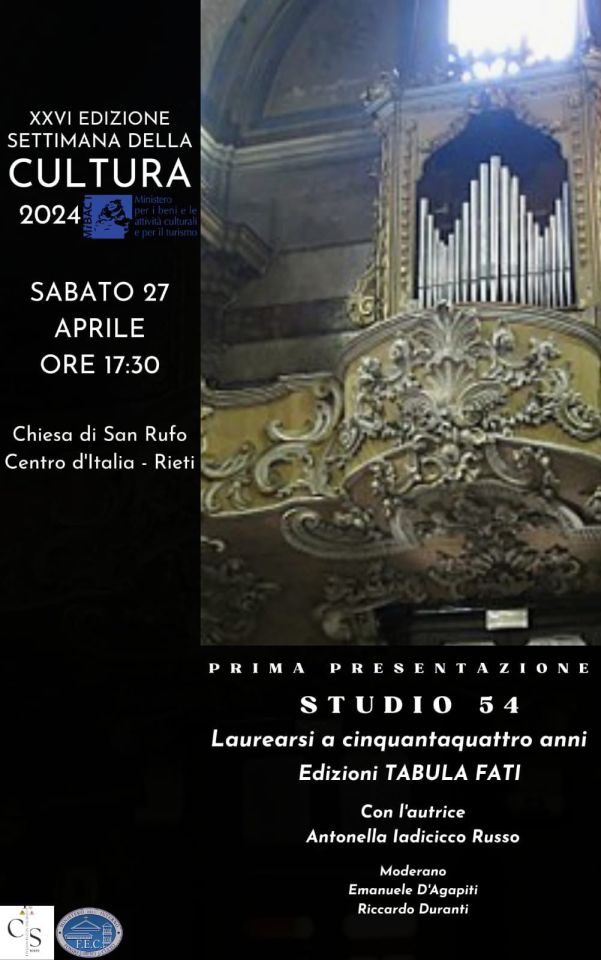#Studio54
Explore tagged Tumblr posts
Text

"54" - Adel Bouteldja photographed by Baldovino Barani for FACTORY Fanzine
#rufskin#nuage#baldovino barani#adel bouteldja#factory fanzine#studio 54#vintage#muscle#studio54#beauty
5K notes
·
View notes
Text

#Vogue#FashionPhotography#DevonAoki#90sFashion#90s#Supermodel#KateMoss#Photography#Disco#Studio54#FashionMagazine#FashionInspiration#TheEditorArchive
8 notes
·
View notes
Photo

1977
Pat Cleveland
Fiorucci
photographed by Charles Tracy
#fashion#fashionphotography#patcleveland#70s#vintage#vintagefashion#vintagephoto#fiorucci#studio54#disco#discooutfit#discofashion#highglamour
59 notes
·
View notes
Text
youtube
It´s 1976, they didn´t let you in at Studio54
2 notes
·
View notes
Text

The Club
“Good Times” (1979) Chic Atlantic Records (Written by Bernard Edwards and Nile Rodgers) Highest U.S. Billboard Chart Position – No. 1
“The key of the success of Studio 54 is that it's a dictatorship at the door and a democracy on the dance floor.” - Andy Warhol
On April 26th, 1977, more than 4000 people showed up on 54th street between 7th and 8th Avenues in NYC to attend the opening of a newly revamped theater turned discotheque (once an opera house in the 1920s) for the grand opening of Studio 54. Eight thousand invites had been sent from many of the bests lists in the city; the line snaked around the block that night with people clamoring to get in. Many celebrities, officially invited, were unable to get through the soon-to-be famous doors. Disco, a popular fusion of soul and dance music, was on the ascendant: hedonistic, generic, joyful, color-blind, and sexually promiscuous (many of the song themes would be about copulation). It was in that year that two newly successful bandmembers from Chic named Bernard Edwards and Nile Rodgers were invited by Grace Jones and unceremoniously turned away at the door. Jones was famously unreliable; there is no telling where she was, but when they didn’t get in they went home and wrote an angry song called “Fuck You”, then changed it to “Freak Out”, then to “Le Freak”, which then went on to become one of the biggest disco songs ever written, and afterward they went to Studio 54 as often as they liked, because there is no golden ticket in the world like fame.

I am sure I don’t have to tell you what Studio 54 was: it was one of the most glamourous, glitziest, expensive spaces in New York. It was a party where everyone, anyone, had a good chance to get in. It held 2,500 and often had more; it had back rooms, was famous for the famous, and sex, and drugs. It had an incredible light show and sound system, and the best DJs. But most of all it was entirely and profoundly mixed: rich, working class, old, young, black, white, gay, straight, gender fluid, normcore. The two owners, Steve Rubell and Ian Schrager, had two rules: they wanted it full, and they wanted a mix, always a mix. Only the uber famous (Halston, Warhol, Jagger, Minnelli, Jackson) were guaranteed entrée; otherwise, it was the mix that mattered. The mix, the show (copious amounts of money on props and effects), and the music.
“A rumor has it that it's getting late Time marches on, just can't wait…” - Lyrics from “Good Times”
The club was the answer to a very gritty and tumultuous decade for the US and New York City in particular; it may be no accident that the theater once housed the old CBS studios known as Studio 52. In the 1950s and 1960s they filmed witty game shows here, which showcased intelligent repartee (To Tell The Truth, What’s My Line, Password, The 64,000 Question), shows that were representative of an urbane and prosperous city, and of high American culture. Rubell and Schrager kept a lot of the old leftover camera equipment from that era (whether as props or as a through-line it is hard to ascertain); in reopening its doors they presented a very new idea of glamor in New York, an antidote to the recent near-bankruptcy, inflation, gas shortages, and in 1978, a full-blown newspaper strike. Public housing in The Bronx was a disgrace (literally on fire in 1977 and broadcast live at a Yankees game by Howard Cosell), and fear and paranoia were rampant as Son of Sam ran around viciously killing young women. Out of all this chaos, Studio 54 and disco. Clearly people needed fantasy, and release, and from this scene arose Bernard Edwards (bass) and Nile Rodgers (guitar) of Chic, two highly accomplished black musicians.
The idea of the band was one of sophistication; the three male leads (which included drummer Tony Thompson) were accompanied by two female singers, and everyone dressed beautifully, almost in a retro vision of glamor; the songs were straight-to-the-dancefloor extended disco tracks, or lush ballads with strings. The songwriting was of exceptional high quality, and the playing incredibly expert (their first hits in 1977 were “Dance, Dance, Dance (Yowsah, Yowsah, Yowsah)” and “Everybody Dance”), and no one, no one, sounded even remotely like them: the guitar and bass lines were ingenious and infectious. In fact, if you want to time travel and exactly conjure the feeling of the late 70s, a Greatest Hits collection will take you right there. After “Le Freak” peaked in 1978 (it would be Atlantic’s, and parent company Warner Brothers, biggest seller of all time until Madonna’s “Vogue” in 1990) it seemed as if Chic, disco, and the nightlife of the Studio 54 crowd would go on forever. Except. Except. Was there something about the sound of Chic, a warped, dragging, rather sad tone, to their hits? The more they succeeded, the sadder around the edges the records became.
I never loved “Le Freak”, as good as it was. In 1979, I must have liked “Good Times”, because I bought it; it was the gray Atlantic label and a plain white sleeve, I remember quite clearly. I think I bought it because of the round piano swirl that opens the record— I was obsessed with how the song was constructed; it was perfect. But I also believe I wanted to understand how it worked, to get to the center of it, so I would drop it into the player and stare at it going around and around for clues that never came. Something about it made me sad. It would be decades before I went back to Chic and discovered the joy in that sadness; this was mature music for sophisticated people, and it captured those years so well, and with such elegance, and if it was sad, it was because there are always sad things seeping in, and possibly because their heyday, and all that high style, would be relatively short-lived considering the perfection of the records they were creating.
The Disco Sucks movement started on July 12th, 1979, in Chicago, Illinois. A radio shock jock held a record-burning stunt at a baseball game in Comisky park and 50,000 people showed up, and after the dj blew up piles of disco records, they swarmed the field and started a riot. Record companies began to re-label their sleeves as Dance Records, not Disco, and the white-wash officially began. The record burning has been likened to a Neo-Nazi event, largely inspired by disgruntled white rock fans, and inherently racially motivated, and I would say I fully believe that. It not without irony that the rather sad quality pushing against the melody of “Good Times” was realistic. It was to be their last No. 1 record under their band name, even if they would go on to produce 1980’s Diana (Diana Ross, but a full-blown Chic record, soup-to-nuts) which would sell 10 million copies, and both Edwards and Rogers would go on to have enormous careers as producers, especially Rodgers, with Bowie’s Let’s Dance right around the corner, not to mention Madonna’s Like a Virgin, produced by Rodgers (and on which all three Chic musicians play) as well as so many more. Nevertheless, I am ahead of myself. It is still 1979, and Studio 54 is still thriving.
“Now what you hear is not a test: I’m rappin to the beat.” - Lyrics from "Rapper's Delight” *
“Good Times” topped the Billboard Pop charts in August, 1979 (B Side: “A Warm Summer Night”). In September of the same year Nile Rodgers was in a club when he heard a song that clearly used the basic elements of their record: the bass, the guitar, a bit of the strings. It was “Rapper’s Delight”, a novelty record produced by a very savvy Sylvia Robinson to exploit the street scenes of break dancing and rapping in The Bronx, which were usually only performed live with a boombox. Certain songs could easy be rapped over, and “Good Times” was one of them. However, real rappers never considered recording. Enter Robinson, some fast thinking, and four quickly auditioned amateurs to make “Rapper’s Delight” as the Sugarhill Gang, and not only did she have it out in a flash, but on her own label, Sugarhill Records (Sugar Hill is a prosperous neighborhood in Harlem).
That night in the club, Nile Rodgers was not pleased. He and Edwards threatened to sue her immediately, and the matter was resolved quickly by Robinson giving them their writing credits, and thereby their money, and re-releasing it. What he could not have foreseen was that this novelty hit (it only went to No. 38 on the charts) would actually change music forever. It is the first successful mainstream rap record (we had the 12”, the first I ever had, in our house, and my brothers and sisters all learned the lines and became living room emcees), and it went on to establish Hip-hop as a genre. It would also lead to many copycats, and many interpolations of Rodger’s guitar and Edward’s tireless bassline, notably in Queen’s “Another One Bites the Dust” and Blondie's “Rapture”.
Looking back on it, Niles feels very differently about one of the most famous examples of record sampling. "As innovative and important as ‘Good Times’ was,” Nile Rodgers has said, “ ‘Rapper's Delight’ was just as much, if not more so.” He is absolutely correct, of course. The success of the Sugarhill Gang led Sylvia Robinson, tireless entrepreneur, to convince a real rapper, Grandmaster Flash, to write and record a track about life as he saw it from the much grittier streets of The Bronx, and he released it as “The Message”, which was a pivotal first. Rap musicians reference this song endlessly as an inspiration, and I love it just as much for its contribution to electronic music.
Back in 1979 my 14-year-old-self stood for so long staring at my copy of “Good Times” as it revolved on the turntable. Was there a reason it felt warped and catatonic as I listened to it? I will never know. I wasn’t old enough to understand what the single portended, which was the future of pop music, years and years early. Things were beginning, and things were ending, right there, all at once, and right in front of my very eyes. It was easy enough to listen, but very difficult to fully comprehend. I needed another 40 years.
-
Sylvia Robinson, a veteran of the biz, not only produced Grandmaster Flash & The Furious Five’s “The Message” but also sang on Mickey and Sylvia’s chestnut “Love is Strange” (1956) —think Dirty Dancing—as well as her own proto-disco song “Pillow Talk” (1973), predating the moans on Donna Summer’s “Love to Love You Baby” by years, and if you don’t know it (I needed some reminding) it has to be heard to be believed. Let’s just say it is at minimum one of the most suggestive Top 40 songs ever recorded. This was obviously a woman with the ears and ambition for a making a hit record. She is now known as “The Mother of Hip Hop”. She passed away in 2011.
Steve Rubell and Ian Schrager went to prison for millions of dollars in tax evasion in January 1980, but not before throwing a big party at 54. They served reduced sentences and eventually opened the nightclub Palladium. Rubell sadly passed away from AIDS in 1989. He was 45 years old.
*(Songwriters: Richey Edwards / Sherill Rodgers)
7 notes
·
View notes
Text

Music History Today: April 27, 2024
April 27, 1980: Three years and a day after opening its doors, New York's legendary Studio 54 was closed for liquor license violations. Schrager and Rubell opened the nightclub as disco was gaining popularity in the U.S. Infamous for its celebrity guest lists, quixotic entry policies, extravagant events, rampant drug use, and sexual hedonism.
2 notes
·
View notes
Text
#FREEDOWNLOADS #FREEPROMO #RADIOCHART Roy Thode recorded live at Studio 54 NYC November 5, 1981 This presentation from DJ Roy Thode was recorded live at Studio 54 on Nov.5, 1981. My release of this recording is, almost to the day, 42 years after the night it was recorded. I hope you enjoy this step back in time from Roy's opening records to his 'walking out the door' music at the end of the night as you relive "A Night At Studio 54". Keep On Dancing!! Скачать: https://ift.tt/sJrazVA https://ift.tt/xnuHPRy
#classic disco#house music#retro dance music#new york dance culture history#marsha stern#heartbeat of the dance floor#roy thode#classic dance music#new york nightlife#FreeDownload#FreeTrack#studio54#r&b#hi-nrg#Roy Thode recorded live at Studio 54 NYC November 5#1981 The Heartbeat Of The Dance Floor ®#SoundCloud
4 notes
·
View notes
Text
Sobre o documentário de Donna Summer na HBO Max
No documentário lançado pela HBO na sexta-feira, 19 de maio, Love To Love You Donna Summer, a vida da cantora estadunidense Donna Summer é revista pela ótica de sua filha do meio Brooklyn Sudano em parceria com o diretor Roger Ross Williams. Com direito muitas cenas de vídeos caseiros, entrevistas, bastidores e variadas gravações. Primeira informação sobre este artigo: na minha infância, eu era…

View On WordPress
#discomusic#divadisco#documentario#donnasummer#eradisco#featured#HBO#hbomax#homofobia#lgbtqia+#musica#news#pride#studio54#televisao
2 notes
·
View notes
Link
00 - Blaudzun-Solar (Intro). 01 - Corizonas-I Wanna Believe. 02 - The Unfinished Sympathy-Give Up Dig Down. 03 - L.A.-Leave It All Behind. 04 - The Sunday Drivers-Do it. 05 - Neuman-La Yo. 06 - St Woods-Flowers on Your Bed. 07 - Australian Blonde-Chup Chup. 08 - Deluxe-If Things Were to Go Wrong. 09 - Sidonie-On the Sofa. 10 - Smile-All Roads Lead To The Shore. 11 - Morgan-Another Road (Gettin' Ready). 12 - Love Of Lesbian-Hi To The Next Times. 13 - The Fakeband-Don´t Save My Life & Everything But Love. 14 - The Right Ons-On The Radio. 15 - Los Canarios-Get on Your Knees. 16 - Los Bravos-Black is black. 17 - Blaudzun-Solar (Despedida)
0 notes
Text

"54" - Adel Bouteldja photographed by Baldovino Barani for FACTORY Fanzine
#rufskin#work#baldovino barani#adel bouteldja#factory fanzine#studio 54#studio54#vintage#muscle#pinup#beefcake#warhol#busboy#waiter
2K notes
·
View notes
Text
CatchTwentyTwo presents: Up My Sleeve / I Love Everything
Produced, recorded and engineered by the artist himself

Emerging in late 2019, A singer, song writer, and producer originally from South Florida, spent many years of his youth migrating state to state from Florida, Arkansas, Texas, Oklahoma, where he lived most of his life and the spark of music started, and back again to Florida. CatchTwentyTwo breaks away from the accustomed routine of music of today's times, and instead chooses to focus on what matters most: the expression of emotion in its authentic form. Often soft-spoken and invariably sullen in his vocal style, the artist delves into deeper themes of emotion in his craft. From the feeling of excitement, joy, and feeling sentimental to romantic, and sad. Each hook, and rhyme is deeply entrenched in conveying the most intimate moments of the human experience.
instagram
CatchTwentyTwo started gaining interest in music after stumbling across Michael Jackson while young on YouTube. From that moment on, he then started taking choir classes throughout middle school and high school. There he would take what he could learn from the piano/keys used by instructors to use in his own production later on after diving deeper into the production side and Fl Studio. His personal influences range from Michael Jackson, Prince, The Weeknd, Daft Punk, Pharrell, Tame Impala, The Neighbourhood, Bruno Mars, Toro y Moi, and Roosevelt, among others.
¡The fourth single from the project "The Love Evangelist" it's here!
Check the videoclip:
youtube
#newmusic#indie#pop#synths#synthy#syntheziser#fIstudio#engineer#producer#altpop#musicvideo#video#reel#reels#artist#disco#70s#80s#90s#vintage#studio54#Instagram#Youtube
1 note
·
View note
Photo

52 notes
·
View notes
Text

Taking it back to the days.. Join us today at Lunchtime 12-2pm (EST) for some good ole Disco music on theshuffle1027.com
0 notes
Text



A musical anecdote for today: After the Studio 54 selector in New York, Chuck Garelick aka Uncle Chuck, didn't let the band CHIC into the club, they recorded the song "Le Freak":
Now we "freak" oh, what a joy
Just come on down to the fifty four
Find your spot out on the floor
1 note
·
View note
Text
Il Percorso Accademico e la Trasformazione Personale con "STUDIO 54 - Laurearsi a cinquantaquattro anni" di Antonella Iadicicco Russo
Un evento speciale il 27 aprile 2024, presso la Chiesa di San Rufo. Antonella Iadicicco Russo presenterà il suo libro “STUDIO 54 – Laurearsi a cinquantaquattro anni”, una narrazione ispiratrice del suo ritorno all’università a cinquant’anni, che si conclude con una laurea con lode ottenuta dopo una sfida personale ed accademica intensa. Nel suo libro, Antonella esplora non solo la sua esperienza…

View On WordPress
#AntonellaIadiciccoRusso#CambiamentoPersonale#CrescitaPersonale#EducazioneAdulta#Frates#LetteraturaInspiratrice#misericordia#musikologiamo#RietiCultura#ScienzeDellaComunicazione#Studio54
0 notes
Text
BLOCK AND CROWN ENJOY PART2 80es HOUSE
#HOUSE#MIXCLOUDE#MIXCLOUDEMUSIC#MUSIC#MUSIK#80es#80HOUSE#DISCOHOUSE#DISCO#OLDSCOOL#OLDSCOOLHOUSE#HAUSMUSIK#80erJAHRE#ELECTRONICMUSIC#ELEKTRONISCH#ELECTRO#80MUSIC#ORIGINAL80sSHOWs#ORIGINAL80s#USA#STUDIO54
0 notes